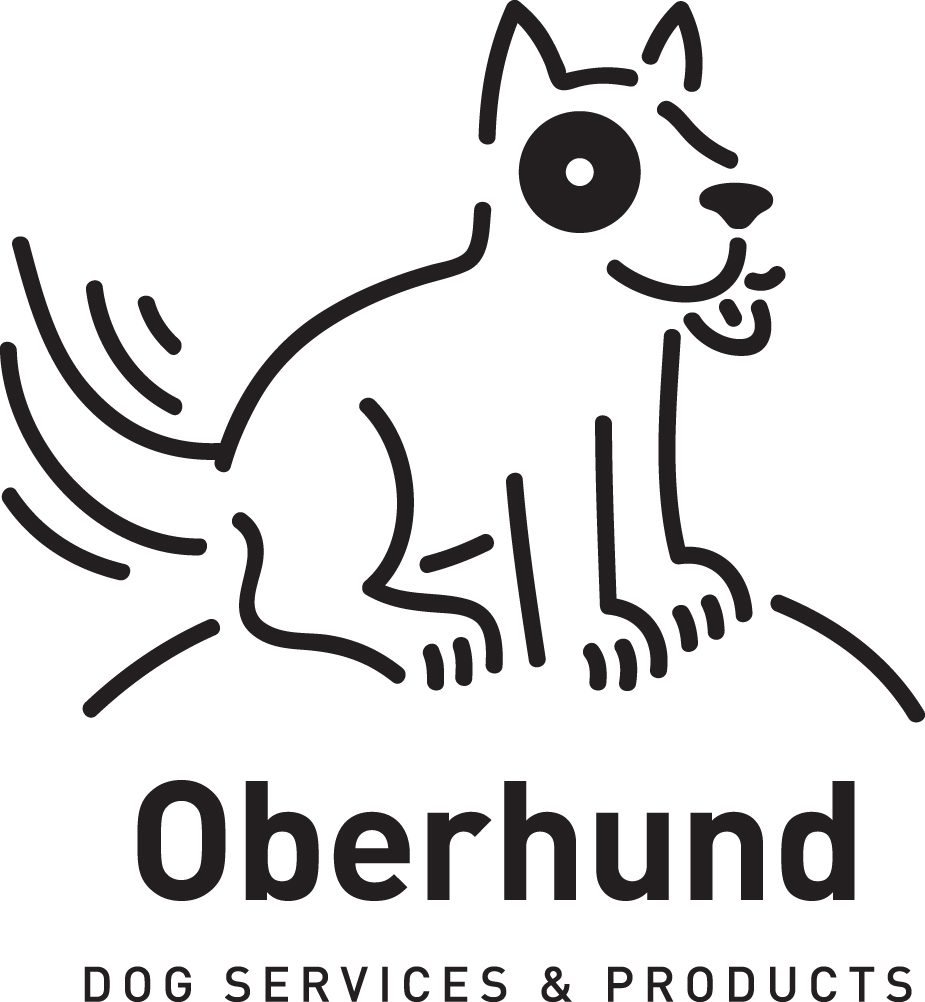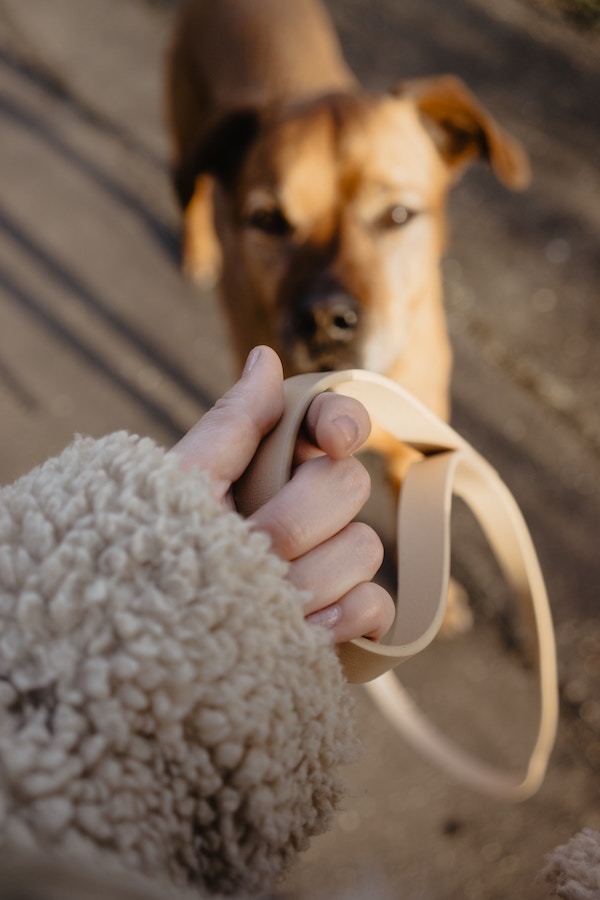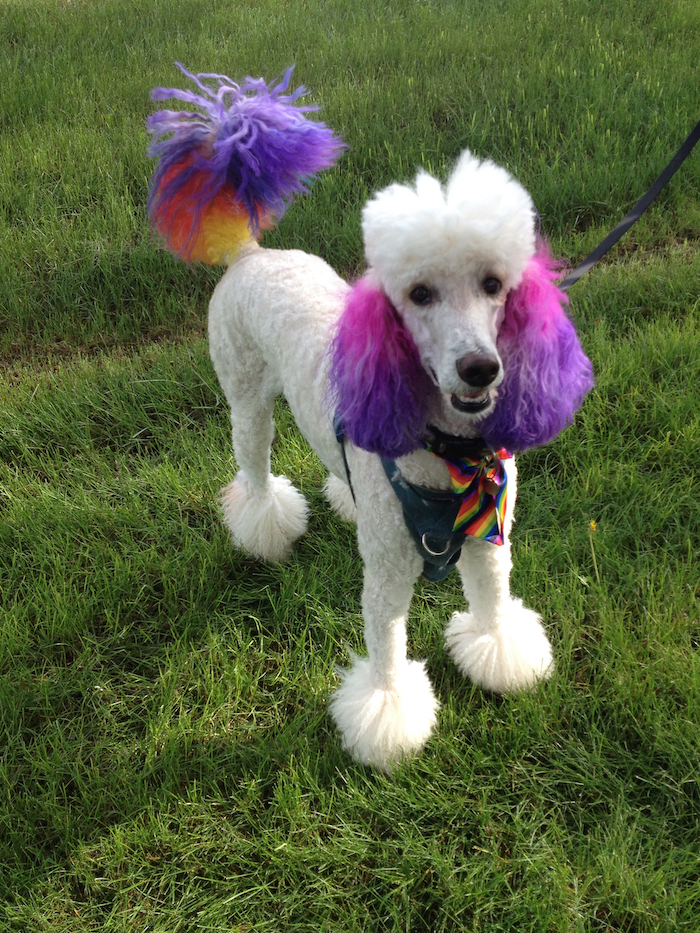Reactive and Destructive Dog Behaviours
Consider this scenario:
For the past two weeks Fido’s person has been very busy working on home renovations and yesterday evening she invited some friends over. When the doorbell rang, Fido ran to the front door, barking loudly as usual; Fido’s person yelled at him to stop but he kept barking. She chased Fido away from the door to let the guests inside, but Fido ran up to meet the guests anyway. Fido has always been very excited when guests come over, but he seemed more excited than usual and started jumping up on the guests. The people yelled at him to stop, but he continued jumping and started mouthing and nipping at clothing. Fido’s person scolded him angrily, grabbed him by his collar, and put him in the spare bedroom. He whined and barked for 30 minutes and then was quiet. A few hours later, after the guests left, Fido’s person opened up the bedroom door to find Fido sitting on the bed “looking guilty” next to a ripped up pillow. She began to scold him. Fido turned his head and “ignored” her. Fido’s person stepped toward the bed, intending to grab his collar and send him outside. Fido crouched and urinated on the bed.
Is Fido a bad dog or a stressed dog?
Overly reactive and destructive behaviours are common symptoms of a stressed dog, and the disruption of home renovations can certainly affect our pets. Add to this the excitement of guests, the tension of yelling and scolding, plus the frustration or anxiety of being alone or separated from family members, and it’s no wonder Fido behaved the way he did. What could Fido’s person have done differently to help him?
Management is essential to improving a dog’s behaviour
An important first step is to try to prevent the rehearsal of the unwanted behaviours by managing the situation (the dog’s environment and access to things in the environment). Set up the dog for success by recognizing his weaknesses and planning accordingly. Fido would have been better able to handle the excitement of guests if he had experienced a few days of things being back to his normal routine; the noise, chaos, and even smells of renovations can be highly stressful. Since her dog normally gets excited by guests, Fido’s person could have prevented unwanted behaviours by having him on a leash when the guests arrived; or Fido could have been in a cozy, comfortable kennel in another room in the house, enjoying a special treat. (Dogs can be trained to love being in their kennel, and this should be trained in advance before testing it out in a difficult situation.) Leaving Fido in a highly amped up state in a room with nothing to occupy him is just asking for trouble, especially in the context of the stressful evening.
Avoid aversive, coercive, punishment-based dog training methods
Another step to improving a dog’s behaviour is avoiding aversive or punishment-based training methods. When possible, take measures to help the dog make good choices that can be rewarded, and if the dog makes poor choices, don’t punish. This doesn’t mean you let the dog do what it wants. It means that punishing this behaviour will cause more problems. When Fido was barking and jumping up on the guests, yelling didn’t help stop his behaviour. A highly aroused dog is unlikely to “register” what his person is saying is unlikely to respond appropriately; the dog is likely to understand the emotional state of the human with the raised voice, but the dog might end up becoming more stressed and agitated by the yelling human. Who knows, the dog might think that his person is upset and “barking along” for the same reason the dog is. Yelling, scolding, intimidation, and physical altercations usually increase the stress levels of both the dog and the person, and this can result in an escalation of the unwanted behaviour, new undesirable behaviours, and a weakening of the trust and bond the dog has with the person.
Learn how to “speak dog”
The third step to preventing problem behaviours is learning how to “speak dog.” Dogs communicate mainly through body language, and humans tend to ignore or misinterpret many of the subtle and quick signals. When Fido’s person entered the bedroom, Fido instantly read her body language (anger) and responded with an appeasement behaviour (ears back, eyes soft). When Fido’s person started to yell, he offered another calming signal (look away/head turn). When that didn’t seem to work, Fido offered a “louder” signal: submissive urination. He was doing all he could to reduce the tension and avoid a conflict. From Fido’s perspective, the ripping of the pillow was not connected in any way to his owner’s anger. Dogs are not mind readers and unless two events occur in close proximity, dogs will not make the connection. Yelling while pointing at the ripped pillow or rubbing the dog’s nose in it might make the human feel better (punishment can be rewarding to the punisher), but it will not communicate anything to the dog except that his owner is unpredictable and violent and should be feared.
“F Responses” Fight, Flight, Freeze, Fidget, Fawn, Fool Around
Acknowledging a dog’s limitations, planning a response rather than reacting, and understanding dog communication can go a long way to helping a dog through a stressful event, but what about dogs who are “bad” all the time?
Excessive barking, marking, hyperactivity, destructive behaviour, aggressive displays, and house training problems can all be signs of stress, but by recognizing the earlier, subtle signs, many serious behaviour problems can be avoided. Most dogs in their early stages of anxiety or uncertainty will do things like avert their eyes, blink frequently, lick their lips or nose, wrinkle the skin around their forehead and eyes, stop to scratch, tuck under their tail, and turn their head away from the thing causing stress. They may also do things that seem out of context like yawning when they are not sleepy, panting when they aren’t hot or tired out, “shaking off” as if after a bath, and drooling when food is not present and there is no mouth injury. Stress-related behaviours can also include whining, excessive grooming, tail chasing, and attempts to hide or escape. Each dog is different and may favour some behaviours over others. The important thing is to recognize the signals for what they are and manage the situation to help reduce the dog’s anxiety before it leads to unwanted behaviours.
In some cases, stress signals can escalate to threat signals (i.e. closing the mouth, freezing, lip lifting, showing teeth, growling, deeper barking, whites of the eyes showing, nose bumping, snarling, snapping the air) and then to a bite. Often a growling, snarling, lunging dog is acting out of fear, showing an aggressive display because fleeing is not an option (i.e. he is on a leash, tied up, cornered, injured). His earlier warning signals have been ignored or misinterpreted; now he is highly stressed, well beyond his threshold. Unfortunately, a common consequence of this is that the dog eventually learns to stop giving the early warning signals because they haven’t been effective; instead, the dog learns to go straight to threat signals because that’s what has been working from the dog’s perspective. (Consider how responding with punishment to these anxiety-based behaviours is likely to cause more stress and make matters worse.)
When dogs have “too much Christmas”
Sometimes dogs overreact because of too much excitement. Many dogs are over-stimulated by the sight of people or other dogs and they become impatient or frustrated by their inability to get closer to them; sometimes these dogs learn that lunging and pulling can get them closer. In many cases, these dogs need more distance and time to become desensitized to the sight of the trigger, but their humans are not aware of this and allow them to get closer before the dog is ready. In many cases dogs with reactive behaviours can be rehabilitated; to do this handlers must recognize and respond to the early calming signals to keep these dogs below their threshold while controlling access to the triggers in the environment.
When reading a dog’s signals, it’s important to look at these behaviours in context. For example, when a dog exposes his belly, sometimes this is an open invitation to a belly rub; but sometimes this is a sign of fearful submission, and if you bend down to try to give the dog a belly rub you may get bitten. Tail wagging is another misunderstood signal. Is the dog wiggling his whole body when he’s wagging his tail? Is his body very forward and stiff when he’s wagging his tail like a flag up in the air? Tail wagging signals the dog’s level of excitement. Whether the tail is held high or low is a clue to the emotions behind that excitement (i.e. fear, friendliness). Look at the whole picture to “read” a dog, and consult reputable resources or trainers if possible.
Chronic stress affects a dog’s health
Along with behavioural problems, dogs that are experiencing chronic stress often have physical symptoms such as allergies, skin conditions, poor coat condition, body odour, excessive shedding, poor or extreme appetites, and digestive problems (diarrhea, constipation, gas, sensitive stomach). It’s important to take note of digestive problems, as these are often both a symptom and a cause of stress. The digestive system is essential to the health of the immune and nervous systems; too much stress is one factor that can lead to gut dysbiosis, an imbalance in the gut flora that can cause hypersensitivity and cognitive and behavioural problems, adding to a dog’s stress levels. A healthy gut is essential to reducing stress and improving a dog’s diet is an important step.
Reducing your dog’s stress
A dog’s stress levels can be reduced through other changes as well. Reducing or removing stressors in the environment can help, even something as simple as closing the curtains or turning down the volume on the television. Massage can be helpful, as well as a variety of tools such as Thundershirts, Bach Flower remedies, and specifically designed music. One of the simplest ways to reduce a dog’s stress levels is to let the dog get sufficient good quality rest or sleep. In a study of stress in dogs, the most stressed dogs were the ones who got fewer than 17 hours of rest or sleep per day. Exercise and activities seem to induce stress when they interfere with a dog’s rest. High performance or highly stimulating activities, although fun, can also be stressful for dogs, and the study suggests that dogs require a lot of rest afterward. Think of a dog at daycare sleeping the entire next day at home. Be careful with sudden changes in routines, as these can be stressful; for example, an over-scheduled dog athlete needs to slowly reduce his schedule.
It’s difficult not to become upset when the dog is destroying our home or when our lives are turned upside down because of our dog’s unwanted behaviours. We can improve things by learning to pay attention to what our dogs are telling us and by making changes to help reduce their stress.







